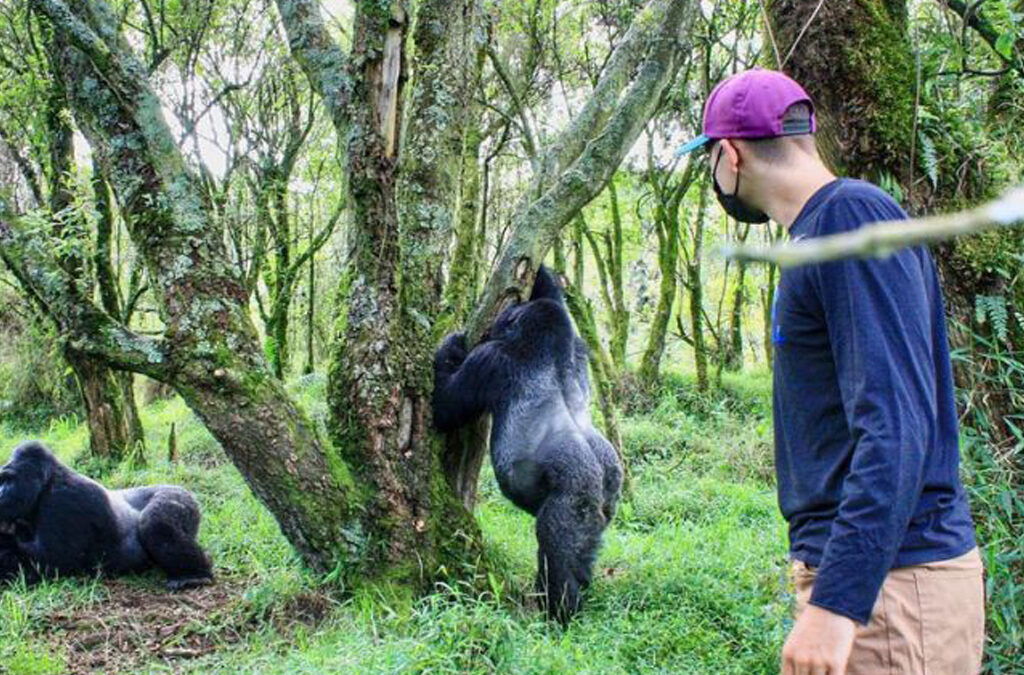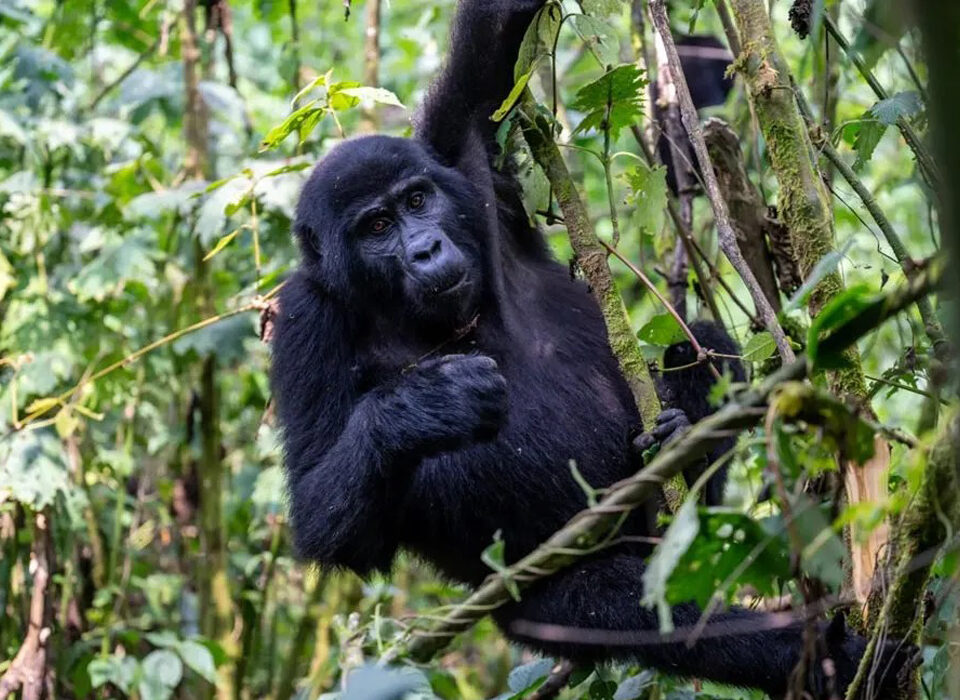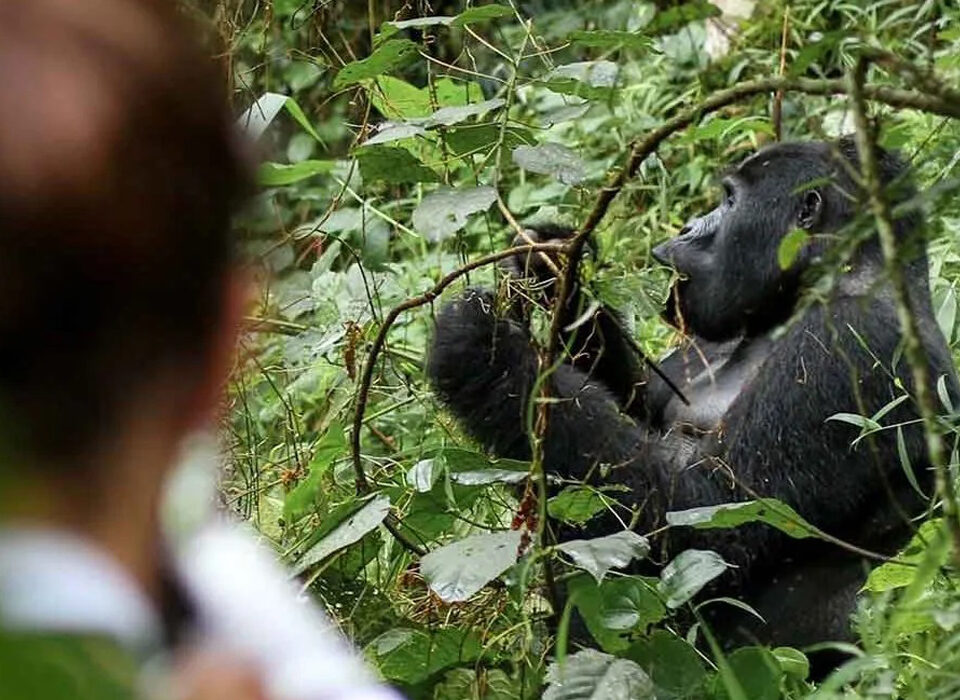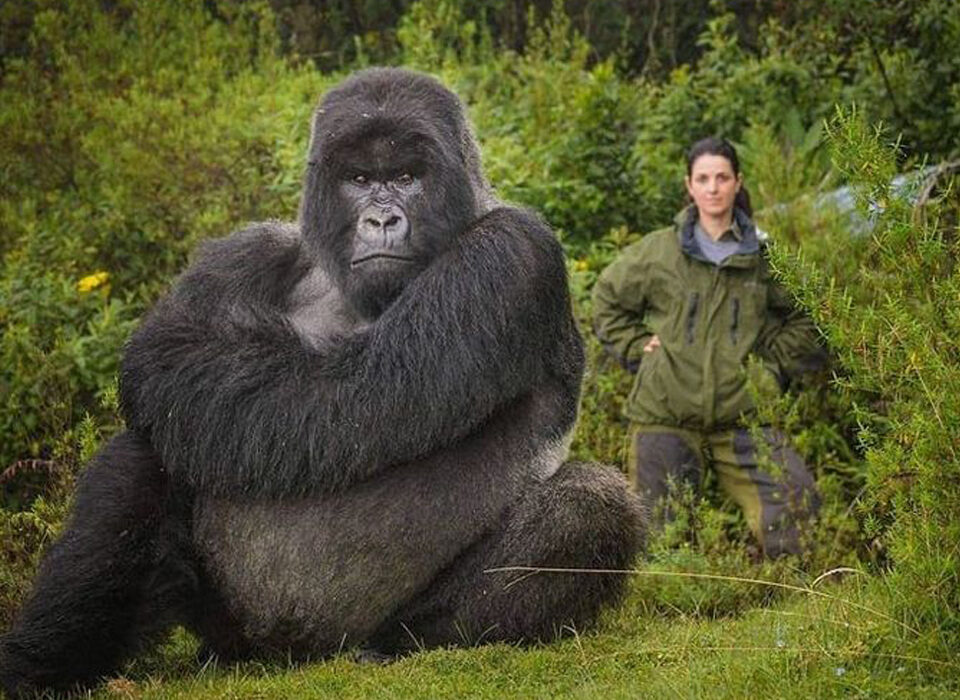- GET IN TOUCH WITH US:
- +256 753518160
- +256 777842166
- info@experiyatourcompany.com

Gorilla Tracking Safari from Entebbe
October 2, 2025
Gorilla Families in Democratic Republic of Congo
October 3, 2025The Cheapest Gorilla Tours in Uganda

The cheapest gorilla tours in Uganda start from approximately $1,250–$1,300 per person for basic 3-day packages. This makes a bucket-list wildlife experience accessible to budget-conscious travelers willing to minimize non-essential expenses. The largest fixed cost remains the mandatory $800 gorilla trekking permit, leaving about $450–$500 for transportation, accommodation, meals, and guide services over three days.
With strategic planning—including low-season travel, budget accommodation choices, and smart starting points such as Kigali instead of Entebbe—travelers can reduce costs significantly while still enjoying safe and memorable gorilla encounters. Understanding which expenses are fixed and which remain flexible allows you to maximize value without sacrificing comfort or safety.
Strategic Timing for Maximum Savings
Low Season Travel Advantages
Uganda’s rainy seasons—March to May and October to November—offer the most cost-effective opportunities for gorilla trekking. Reduced tourist demand during these months triggers substantial price drops across accommodations, tour packages, and related services. Operators compete for the few travelers who venture out in this period, often offering 20–40% discounts compared to peak season.
Budget travelers benefit from these reductions by gaining access to mid-range accommodations at budget rates or receiving extra value inclusions such as complimentary activities or upgraded meals. The lower competition for permits also provides booking flexibility, eliminating costly last-minute purchases and reducing the need to commit months ahead.
Peak Season Cost Premiums
By contrast, the dry months—June to September and December to February—bring premium pricing. During these periods, international demand for optimal trekking conditions pushes accommodation, transport, and package rates much higher, sometimes even doubling or tripling low-season costs.
In addition, permits become scarce, often forcing travelers into extended itineraries when preferred dates are unavailable. This combination of high rates and reduced flexibility makes peak season trekking significantly more expensive.
Optimizing Tour Duration and Structure
Three-Day Package Efficiency
The most affordable gorilla tours typically follow a 3-day format. These itineraries streamline the essentials: transport to Bwindi, one night’s pre-trek accommodation, the trek itself, and the return journey. By cutting out extra parks and activities, these packages remain tightly focused on the gorilla experience.
Most follow the simple pattern of Day 1 travel, Day 2 trek, and Day 3 return, which minimizes costs while ensuring a full gorilla encounter. This structure works well for travelers with limited vacation time or those combining Uganda with other East African destinations.
Extended Tour Cost Implications
Adding extra parks such as Murchison Falls, Queen Elizabeth, or Kibale Forest raises costs significantly. Extra nights, more transport, and additional park fees quickly expand the budget. While extended tours provide great value for travelers seeking diverse wildlife, they may not suit those focused strictly on gorillas. Budget travelers should carefully evaluate whether the extra activities justify the added expense.
Strategic Starting Point Selection
Kigali Airport Advantages
Flying into Kigali International Airport in Rwanda instead of Entebbe International Airport in Uganda can save both time and money. The drive from Kigali to Bwindi’s southern sectors takes only 4–5 hours, compared to 8–10 hours from Entebbe. This reduced distance nearly halves transport costs and minimizes fatigue.
In many cases, international flights to Kigali are cheaper than flights to Entebbe, particularly from Europe and the Middle East. Savings of $200–$400 per person are common when combining airfare and ground transport reductions.
Travelers starting in Kigali can also combine Uganda gorilla trekking with Rwanda’s Volcanoes National Park, creating opportunities for double gorilla encounters at a relatively low additional cost.
Border Crossing Considerations
When starting from Kigali, travelers must secure a Uganda visa or the East African Tourist Visa (around $100). This multi-country visa covers Uganda, Rwanda, and Kenya, offering excellent value for regional explorers. Tour operators typically assist with border procedures, ensuring smooth transitions.
Accommodation Selection Strategies
Budget Lodge Options
The cheapest gorilla tours use budget lodges or campsites costing $50–60 per night. In contrast, mid-range lodges cost $100–200, while luxury properties exceed $400 per night. Budget options typically provide basic private rooms or shared facilities with simple meals—sufficient for short trekking stays.
Popular budget choices in Bwindi include:
- Buhoma Community Rest Camp – a community-owned facility offering basic, affordable rooms while supporting local residents.
- Rushaga Gorilla Camp – located near multiple trailheads, reducing transport costs on trekking mornings.
- Broadbill Forest Camp – simple, clean forest accommodation that delivers authentic wilderness immersion.
Comfort Versus Cost Trade-offs
Budget properties often lack luxury amenities such as reliable electricity, hot showers, or gourmet meals. However, they remain clean, safe, and perfectly functional for short treks. Travelers willing to accept simplicity in exchange for savings can free up funds for additional activities or reduce overall trip costs.
Booking Through Local Tour Operators
Package Service Advantages
Local operators bundle permits, transport, accommodation, guides, and meals into affordable all-inclusive packages. Their partnerships with lodges and the Uganda Wildlife Authority enable discounted rates that independent travelers usually cannot access. Operators also manage logistics such as vehicle arrangements, accommodation in remote areas, and emergency support—ensuring smooth, worry-free experiences.
Self-Drive Limitations
Self-drive trips may seem cheaper but often end up costing more due to hidden risks: vehicle breakdowns, poor road conditions, navigation errors, and difficulty securing remote bookings. Without local knowledge, self-drive travelers face unnecessary stress, making operator-led tours a safer and more cost-effective choice.
Standard Package Inclusions
Most budget packages cover:
- The $800 gorilla trekking permit
- Transport in a 4×4 safari vehicle
- English-speaking driver-guide services
- Budget lodge accommodation for required nights
- Basic meals and drinking water
This structure prevents surprise costs and simplifies financial planning.
Additional Expense Planning
Travelers should budget separately for:
- Uganda visas or the East African Tourist Visa
- Personal gear (rain jackets, hiking boots, insect repellent)
- Porter services ($15–20)
- Tips and gratuities for guides and staff
- Alcoholic beverages
- International flights
Porter Service Value
Hiring a porter is highly recommended. For a modest fee, porters carry daypacks, assist on steep or muddy slopes, and greatly improve trek enjoyment. This not only eases the trek but also supports local communities who rely on tourism income.
Maximizing Budget Tour Value
To get the best out of budget gorilla trekking:
- Choose reputable operators with strong reviews and transparent pricing. The cheapest option is not always the best value if it cuts corners on safety or quality.
- Set realistic expectations. Budget tours mean simple meals, basic accommodations, and fewer amenities—but the gorilla encounter itself remains the same magical experience as in luxury packages.
By balancing cost savings with safety, comfort, and experience quality, travelers can enjoy a truly memorable gorilla trek in Uganda without overspending.



